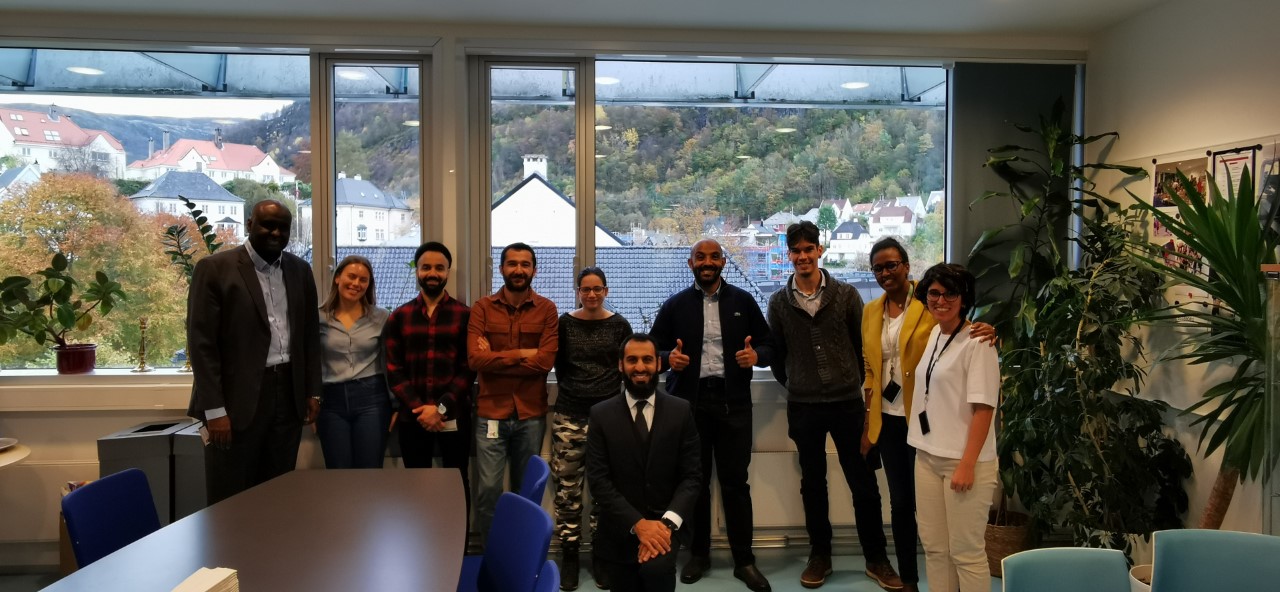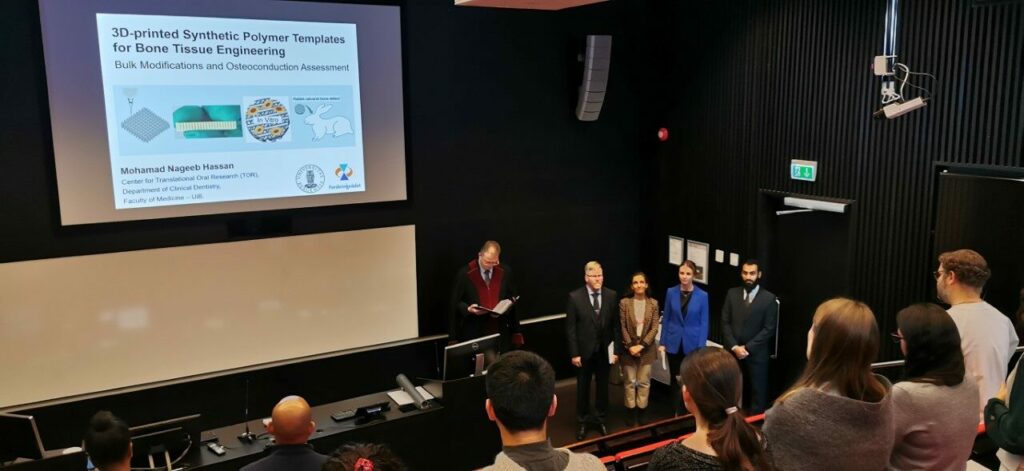Mohamad Nageeb Hassan defended his PhD thesis at the University of Bergen on 21 October 2022 with the thesis “3D-printed Synthetic Polymer Templates for Bone Tissue Engineering.
Abstract
Synthetic polymer biomaterials are easy to process, biologically inert and are therefore used in a variety of biomedical applications. Research has for a long time focused on increasing the biological activity of such materials. Three-dimensional (3D) printing is suitable for producing biomaterial templates with great precision according to specific design parameters. The aim of this thesis was to investigate 3D-printed synthetic polymer templates for use in the cultivation and regeneration of bone tissue.
In the investigations, first a systematic literature review was conducted to analyze relevant factors in the use of 3D-printed degradable templates and their effect on bone regeneration in cranial bone defects in different animal species (Study I). It was found that the effect on bone regeneration was highest with composites consisting of polymers and bioceramics. In Study II, a study was conducted on the functionalization of 3D-printed polycaprolactone (PCL) templates with gelatin (GL). Despite the fact that an increased amount of GL (at 8 and 16%) improved the osteogenic differentiation of stem cells (in vitro), the templates were not continued due to the material’s low tensile strength. In study III, poly(lactide-co-trimethylenecarbonate) (PLATMC) was compared with PCL, and it was found that PLATMC had more favorable both degradation and mechanical properties than PCL. In addition, PLATMC proved better suited to promote mineralization of extracellular matrix (ECM) from human stem cells in vitro. When both templates were implanted in skull bone defects in rabbits (in vivo), the PLATMC templates showed the greatest ingrowth of bone directly on the material surface, something not previously described for synthetic polymers. In Study IV, it was chosen to modify PLATMC by combining the polymer with hydroxyapatite (HA), a mineral and an important component of bone mass.
In summary, it was found that unmodified 3D-printed PLATMC promoted mineralization of ECM both in vitro and in vivo. The results of these studies collectively support the use of 3D-printed PLATMC templates for bone regeneration.
Personnel
Mohamad Nageeb graduated as a dentist from Alexandria University in Egypt in 2006, and then studied materials science at the same university. In parallel, Nageeb gained research experience in bone tissue regeneration. He then continued, in 2016, with his doctorate at the University of Bergen under Professor Kamal Mustafa in the Tissue Engineering Group at the Department of Clinical Dentistry, Faculty of Medicine.
He is currently associated with the Center for Translational Oral Research TOR-IKO.


